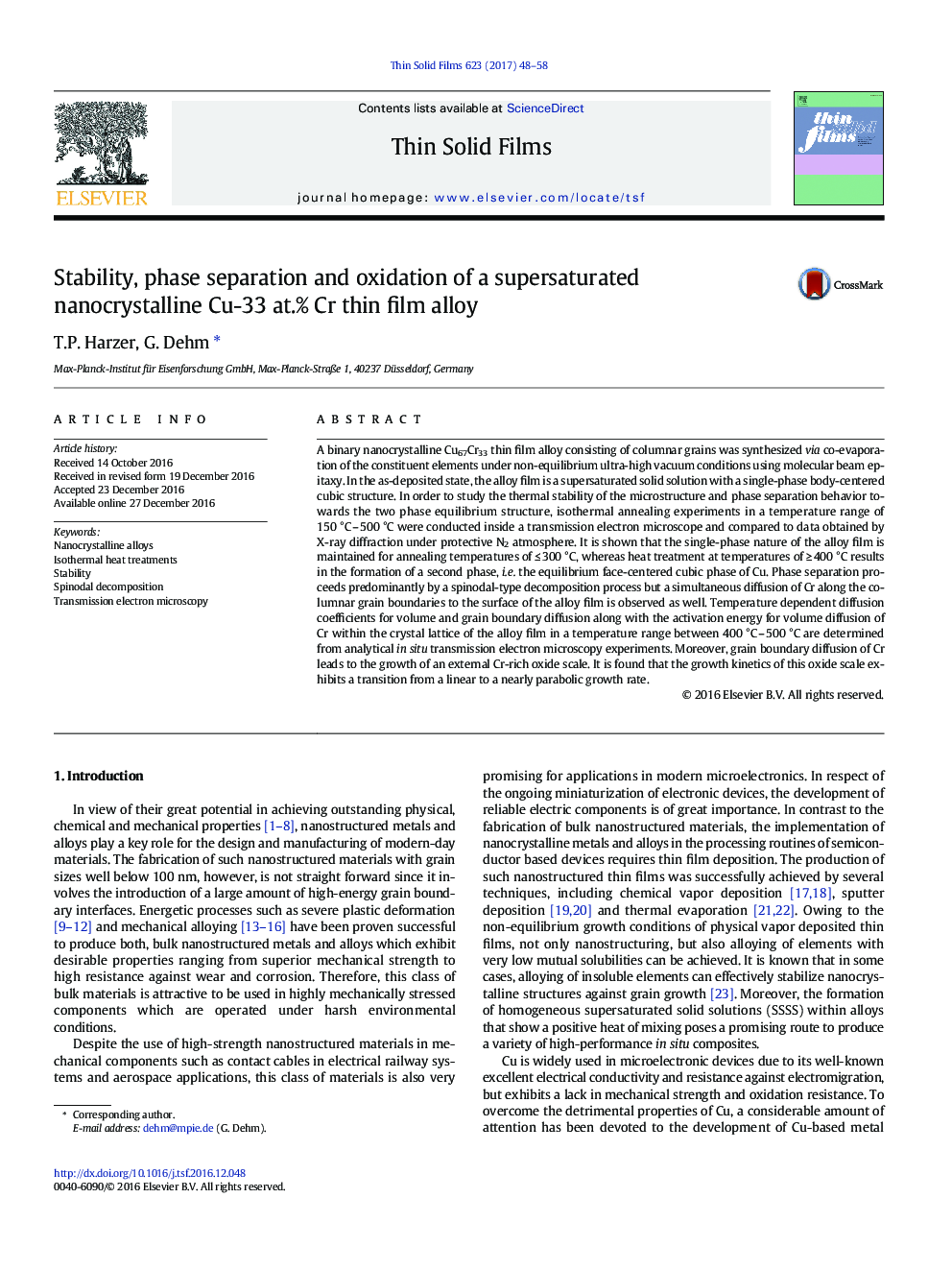| Article ID | Journal | Published Year | Pages | File Type |
|---|---|---|---|---|
| 5466191 | Thin Solid Films | 2017 | 11 Pages |
Abstract
A binary nanocrystalline Cu67Cr33 thin film alloy consisting of columnar grains was synthesized via co-evaporation of the constituent elements under non-equilibrium ultra-high vacuum conditions using molecular beam epitaxy. In the as-deposited state, the alloy film is a supersaturated solid solution with a single-phase body-centered cubic structure. In order to study the thermal stability of the microstructure and phase separation behavior towards the two phase equilibrium structure, isothermal annealing experiments in a temperature range of 150 °C - 500 °C were conducted inside a transmission electron microscope and compared to data obtained by X-ray diffraction under protective N2 atmosphere. It is shown that the single-phase nature of the alloy film is maintained for annealing temperatures of â¤Â 300 °C, whereas heat treatment at temperatures of â¥Â 400 °C results in the formation of a second phase, i.e. the equilibrium face-centered cubic phase of Cu. Phase separation proceeds predominantly by a spinodal-type decomposition process but a simultaneous diffusion of Cr along the columnar grain boundaries to the surface of the alloy film is observed as well. Temperature dependent diffusion coefficients for volume and grain boundary diffusion along with the activation energy for volume diffusion of Cr within the crystal lattice of the alloy film in a temperature range between 400 °C - 500 °C are determined from analytical in situ transmission electron microscopy experiments. Moreover, grain boundary diffusion of Cr leads to the growth of an external Cr-rich oxide scale. It is found that the growth kinetics of this oxide scale exhibits a transition from a linear to a nearly parabolic growth rate.
Keywords
Related Topics
Physical Sciences and Engineering
Materials Science
Nanotechnology
Authors
T.P. Harzer, G. Dehm,
